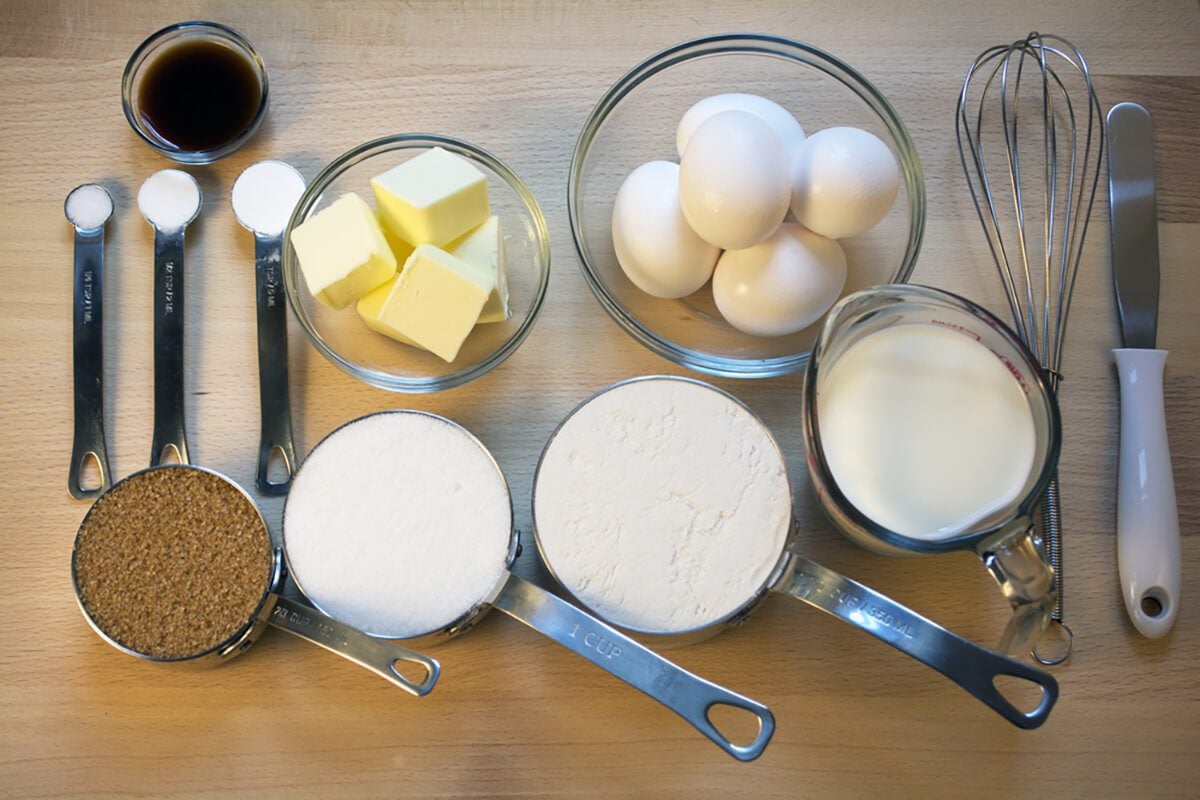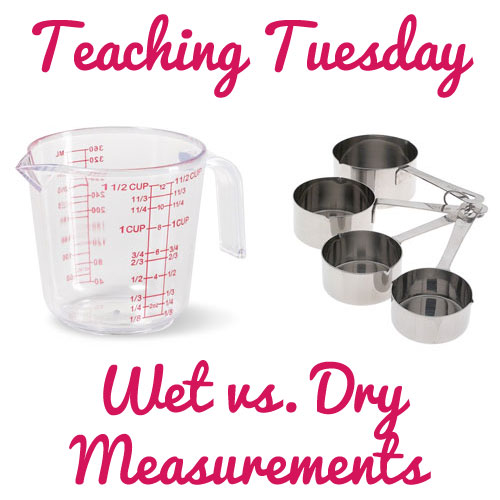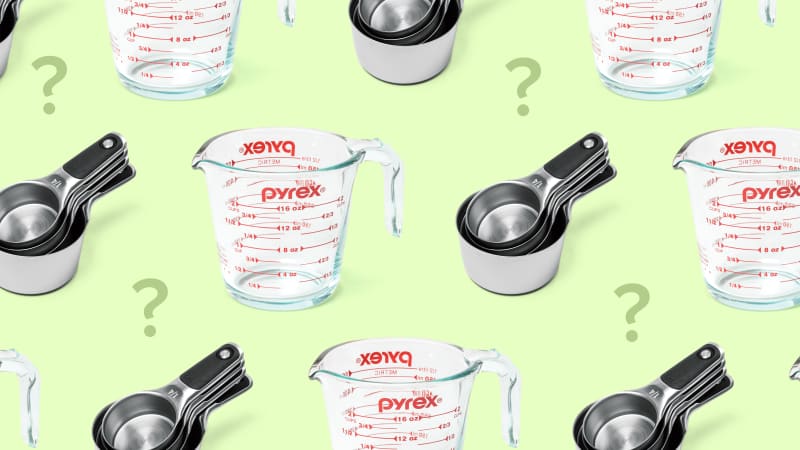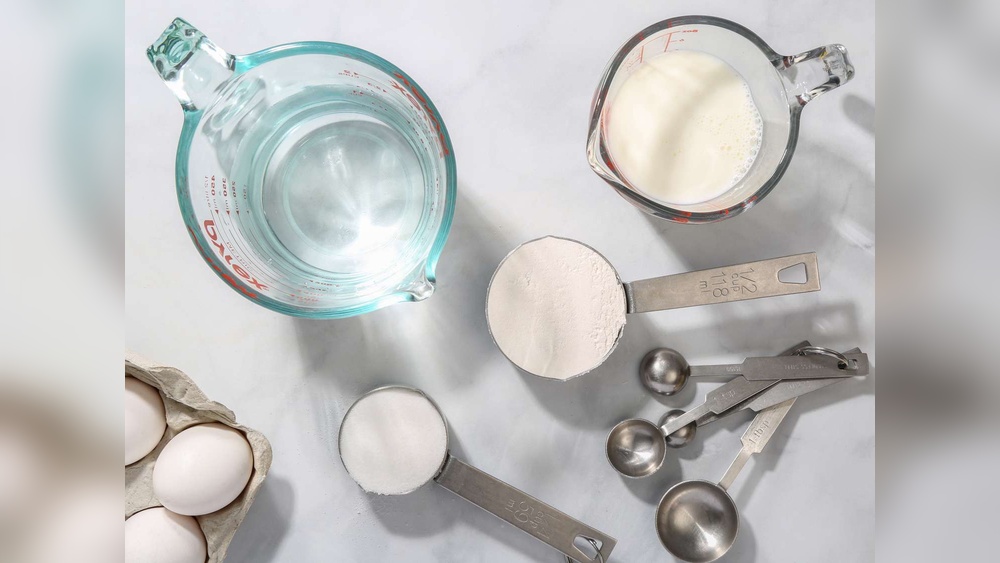Have you ever wondered why your kitchen has different measuring cups for dry and liquid ingredients? It’s not just a random choice—using the right measuring cup can make a huge difference in how your recipe turns out.
When you measure flour with a liquid cup or pour milk into a dry cup, you might be setting yourself up for inaccurate amounts and baking disasters. You’ll discover why dry and liquid measuring cups are designed differently, how each one works, and why choosing the correct one can save you time, frustration, and ensure your dishes come out perfectly every time.
Keep reading to master the simple yet crucial secret behind accurate measuring!

Credit: www.tasteofhome.com
Dry Measuring Cups Design
Dry measuring cups are made to measure solid ingredients precisely. Their design helps you get the right amount of flour, sugar, or grains. These cups come in sets with different sizes, allowing easy measurement of various amounts. The design focuses on scooping and leveling to avoid extra or missing ingredients.
Using dry measuring cups ensures baking and cooking results are consistent. The shape and materials play a big role in how well they work. Understanding their design helps improve your kitchen skills and recipe success.
Materials And Shapes
Dry measuring cups are usually made of metal or plastic. Metal cups are sturdy and easy to clean. Plastic cups are lightweight and often come in colorful sets. The shape is typically a solid cup with straight sides and a flat top.
The straight sides allow you to level off ingredients easily. The flat top helps remove extra ingredient with a knife or spatula. Most sets include sizes like 1 cup, ½ cup, ⅓ cup, and ¼ cup.
Scooping And Leveling Technique
To measure dry ingredients, scoop them into the cup until full. Do not shake or tap the cup to settle the ingredient. Then, use a flat edge to level off the excess. This step gives an exact amount needed for the recipe.
Leveling prevents adding too much ingredient, which can change the recipe outcome. This method works best with flour, sugar, and other dry items. Proper technique ensures your cooking or baking turns out just right.
Liquid Measuring Cups Features
Liquid measuring cups are made to help measure wet ingredients easily and accurately. They have special features that make pouring and reading measurements simple. These features help prevent spills and mistakes in cooking or baking.
Understanding these features helps you use the right cup for liquids. It also improves your recipe results by giving you correct amounts every time.
Spout And Handle Purpose
Liquid measuring cups always have a spout to pour without spilling. The spout guides liquids smoothly into bowls or pans. They also have a handle on the side for a firm grip. This handle helps hold the cup steady while measuring and pouring.
Measuring At Eye Level
These cups are clear and tall, so you can see the liquid inside. To measure correctly, place the cup on a flat surface. Bend down and look straight at the measurement marks. This eye-level view helps avoid errors from looking at an angle.
Meniscus Reading
Liquid forms a curve at the surface called the meniscus. The correct measurement is read at the bottom of this curve. Reading the meniscus ensures you get the exact amount of liquid. This is why liquid cups have clear markings on the side.
Measuring Differences Impact
Measuring cups for dry and liquid ingredients have unique designs that affect accuracy. The differences in measurement methods impact the final outcome of recipes. Understanding these impacts helps ensure correct ingredient amounts and better cooking results.
Dry Ingredient Accuracy
Dry ingredients need leveling for accurate measurement. Scooping flour or sugar directly can pack the ingredient, causing excess. Dry measuring cups allow you to fill and then level off with a flat edge. This method ensures the amount matches the recipe’s requirement exactly. Using liquid cups for dry ingredients often leads to uneven measurements and inconsistent cooking results.
Liquid Ingredient Precision
Liquid measuring cups have extra space above the measurement line. This prevents spills and allows easy pouring. The clear markings on the side help measure at eye level. Liquids settle evenly, so you get a precise volume. Using dry cups for liquids can cause overfilling and inaccurate readings. Precision in liquid measurement is key for recipe balance.
Surface Tension Effects
Surface tension causes liquids to form a curved shape, called the meniscus. Liquid measuring cups are designed to help you read the bottom of this curve for accuracy. Dry measuring cups do not account for this curve. If you use a dry cup for liquids, surface tension may cause the liquid to mound or spill. This leads to incorrect ingredient amounts and affects the recipe’s texture.

Credit: happyherbivore.com
Common Measurement Mistakes
Measuring ingredients correctly is vital for good cooking and baking results. Many cooks make mistakes by using the wrong type of measuring cup. These errors can change the texture and taste of your food. Understanding common measurement mistakes helps avoid these problems.
Using Dry Cups For Liquids
Dry measuring cups do not have a spout or handle. They are designed to be filled and leveled off. When you use a dry cup for liquids, you cannot see the exact level of the liquid. This leads to overfilling or spilling.
Liquids also stick to the sides of dry cups. This makes the measurement less accurate. It is hard to pour liquids smoothly from dry cups. The absence of a spout causes messes and waste.
Using Liquid Cups For Dry Ingredients
Liquid measuring cups have space above the measurement line. This space works for liquids but not for dry ingredients. When measuring dry items like flour or sugar, this extra space causes errors.
Dry ingredients may settle or be packed differently in a liquid cup. You cannot level them easily because of the cup’s shape. This leads to using too much or too little of the ingredient.
Choosing The Right Cup
Measuring ingredients correctly is key for great recipes. Using the right cup helps get accurate amounts. Dry and liquid ingredients need different cups. Each type is made to measure precisely.
Choosing the right measuring cup saves time and avoids mistakes. It helps keep your cooking consistent and tasty. Let’s explore when to use each cup and how spoons fit in.
When To Use Dry Cups
Dry measuring cups work best for ingredients like flour, sugar, and oats. Scoop the ingredient into the cup. Then level it off with a flat edge. This method gives an exact amount.
These cups come as sets with different sizes. They do not have spouts or handles. They are designed to be filled and leveled easily. Use them only for dry ingredients.
When To Use Liquid Cups
Liquid measuring cups are perfect for water, milk, and oil. They usually have a handle and a spout. This design helps pour liquids without spilling.
Measure liquids at eye level for accuracy. The liquid’s curve, called the meniscus, should line up with the measurement mark. These cups come in glass or plastic.
Measuring Spoons Role
Measuring spoons are for small amounts of both dry and liquid ingredients. Use them for spices, baking powder, or vanilla extract. They come in sets with different sizes.
Spoons help measure precise amounts when cups are too large. They are handy for recipes needing small quantities. Keep spoons clean and dry for best results.
Tips For Accurate Measuring
Accurate measuring is key to baking and cooking success. Using the right technique prevents mistakes and ensures consistent results. Here are simple tips to measure dry and liquid ingredients correctly for the best outcomes.
Leveling Dry Ingredients
Scoop the dry ingredient into the measuring cup. Use a flat edge, like a knife, to level off the excess. This removes extra ingredient and gives a precise amount. Avoid packing the ingredient unless the recipe says so. Light and loose scooping keeps measurements accurate.
Reading Liquid Levels Correctly
Pour liquid into a clear measuring cup placed on a flat surface. Bend down to eye level with the cup. Check the bottom of the curve, called the meniscus, to read the exact amount. Never guess from above or hold the cup in your hand. This simple step stops errors in liquid measurements.
Avoiding Spills And Overfilling
Fill measuring cups slowly to prevent spills. Stop just below the rim for liquids to avoid overflow. Use a steady hand and pour gently. For dry ingredients, avoid mounding over the cup’s edge. Clean spills right away for a neat kitchen and precise measuring.

Credit: www.americastestkitchen.com
Frequently Asked Questions
Does 1 Cup Of Liquid Equal 1 Cup Of Dry?
No, 1 cup of liquid does not equal 1 cup of dry. Dry cups are leveled; liquid cups measure meniscus for accuracy.
Is There A Difference In Dry And Liquid Measuring Cups?
Dry measuring cups are for solid ingredients and require leveling off. Liquid measuring cups have a spout and handle for easy pouring and accurate liquid measurement at eye level. Using the wrong type causes inaccurate measurements and affects recipe results.
Can I Use The Same Measuring Cup For Dry And Liquid Ingredients?
No, use separate measuring cups for dry and liquid ingredients. Dry cups allow leveling; liquid cups have spouts for accurate pouring. Mixing them causes inaccurate measurements and affects recipe results.
Is 1 Cup Dry The Same As 1 Cup Liquid On Reddit?
No, 1 cup dry is not the same as 1 cup liquid. Dry cups are meant to be leveled off, while liquid cups have a spout for precise pouring. Using the wrong cup can cause inaccurate measurements and affect your recipe’s outcome.
Conclusion
Using the right measuring cup ensures your recipes turn out just right. Dry cups help level ingredients like flour for accuracy. Liquid cups let you see measurements clearly at eye level. Mixing these can cause mistakes and affect taste. Simple tools, used correctly, make cooking easier and more fun.
Keep dry and liquid cups separate to measure with confidence every time.

